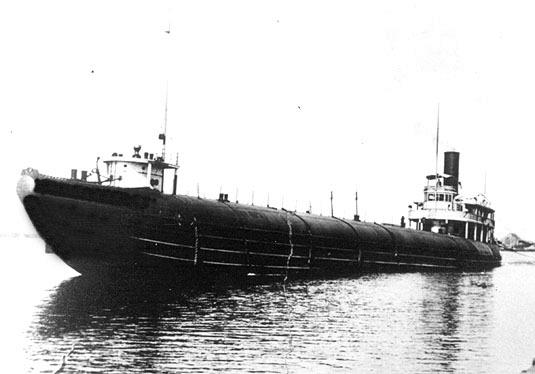|

|
| Clifton |
The Lost "Pigboat" Clifton
By James Donahue
The whaleback freighter Clifton is among a fleet of lost ships lying on the bottom of Lake
Huron. This strange looking boat vanished with all hands on Sept. 22, 1924, during a severe gale that swept the lake.
Wreckage,
including a piece of the pilot house and some broken hatch covers, washed ashore near Kincardine, Ont., about a week later.
A clock on the pilot house wall was stopped at four o'clock. Capt. Dalton Hudson, master of the steamer Clencarin, which found
the wreckage, said he thought the Clifton sank in the morning when the gale was blowing its worse.
The bodies of the
28 sailors lost with the freighter were never found.
The Clifton was one of 42 "pigboats" designed and built at the
turn of the century by Capt. Alexander McDougall, a Scotchman who migrated as a boy to Canada.
Sailors called them
pigboats because their rounded bows resembled the snout of a pig.
After sailing the lakes for several years, McDougall
became obsessed with a radical new boat design he believed would do well in the harsh waves generated by Great Lakes storms.
Instead of riding over the waves, his boats were designed to go through them. The hull design resembles that of modern submarines.
The
boats also were designed to offer minimum resistance to wind and sea. They had rounded hulls and superstructure, and the vessels
settled low in the water, especially when loaded, so that only about seven or eight feet of the deck appeared above the water
line. It was normal for waves to wash over the decks.
McDougall's design proved to be seaworthy. Most of the 13 freighters,
one passenger liner and more than 25 barges he built survived long years of service before they were scrapped. A few, like
the Clifton, were lost in storms, but their loss rate was no worse than that of other types of vessels plying the lakes at
the time.
On her final trip, the Clifton, under the command of Capt. Emmett Gallagher, steamed through the Straits
of Mackinaw and entered Lake Huron on Sunday, Sept. 24. The boat was laden with a cargo of stone, loaded at Sturgeon Bay,
Wis., and bound for Detroit.
The storm was already building from the southwest at about 11 a.m. when, somewhere off
Forty Mile Point, the Clifton passed the wrecking and salvage tug Favorite, steaming for home at Sault Ste. Marie. The tug's
skipper, Capt. Alex Cunning, noted in his log that the whaleback was taking a lot of water over her decks, but "making good
weather of it."
Cunning was the last person to see the Clifton. When the freighter didn't arrive at Detroit three days
later, a massive search was launched. The only trace of the lost whaleback was the wreckage found on the Canadian shore.
The
fact that no bodies floated ashore indicated that the ship sank quickly and unexpectedly. The sailors, who lived and worked
below deck, didn't have time to get out of it, or launch lifeboats.
The cause of the sinking remains a mystery.
The
Clifton was 32 years old when it was lost. The boat had just gone through a thorough fitting out and passed a government inspection
at Detroit a few weeks earlier. The work included the installation of self-unloading equipment on its decks.
The vessel
was known for most of its years as the Samuel Mather. The name was changed by the final owners, the progress Steamship Co.
of Cleveland, in 1923.
|

